Chasing Kingfish on the Spear in Winter
By Davie Du Pavillon
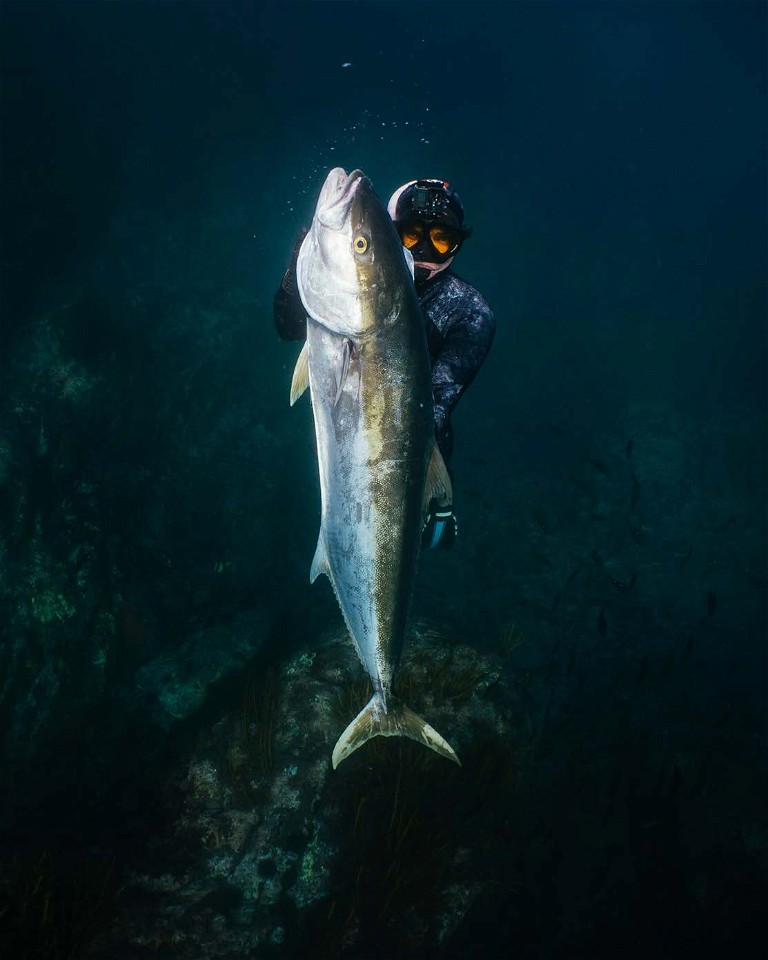
Photos by Etoile Smulders
It is generally accepted that the kingfish in NZ largely ‘disappear’ for the winter months. They typically head to an unknown destination to fatten up and count down the days until they can make an appearance on every pinnacle and hotspot in the country during summer.
We had been wanting to go to the Mokes before the summer season ended, but with the constant easterlies we were faced with, it was June before a gap lined up for us to get out with some friends on our dive boat. The aim was to find some fat winter kingfish and blue water, as the inshore conditions were below average.
From a spearfishing perspective, when you do find kingfish in winter, their curiosity seems to have waned and their behaviour is cagey (compared to summer when most kingfish are schooling and will attempt to rub noses with you). The challenge of fish keeping their distance and making you work harder to get in a position to shoot makes for stimulating diving and rewarding captures. In summer, just your presence in the right place at the right time is enough to guarantee an encounter, whereas in winter you have to get a little more creative with your approach.
After jumping in at a few spots where the current wasn’t quite right and seeing a few kings down deep, heading off into the distance with no interest, we eventually got to a spot where the current was running along the edge of a drop-off, which concentrated the bait on a pressure point at the top of the drift. The visibility was 15-20m, and the bait was balling and darting erratically – a sure way to tell there were predators in the area.
Koheru, for me, are the ticket to kingfish success. Find the fattest shoaling koheru and chances are there will be kingfish in the area. Getting them to show themselves is the challenge. A tactic we use is to dive in a pair and take turns shooting the koheru. We then leave them on the line for a short while, before retrieving them to ‘gut’ in the water. This creates a great berley trail, and if you don’t attract anything else after an hour or two, at least you will have some great koheru that has been gutted to take home for sashimi.
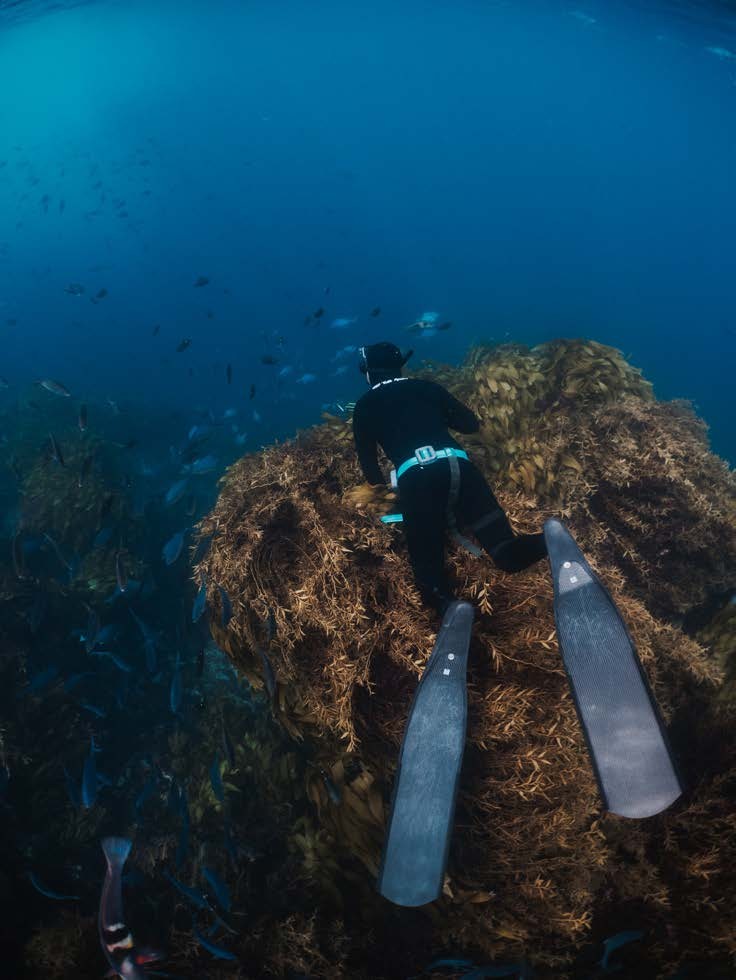
We eventually found a spot where the bait was concentrated on a pressure point, with current running along a drop-off.
The fact that there are minimal sharks around in the colder months makes this technique more of a winter sport, as anyone who has berleyed up on a pinnacle in summer will know that it does not take long to attract the wrong customers. Long bottom times and throaty grunts can pique the fish’s curiosity, but nothing beats a bait fish struggling. This is definitely the best way to transmit a signal to the kingfish’s lateral line that there is food around.
It wasn’t long before we saw some good-sized kingfish under the bait and, with a bit of cunning, we got one on the boat. I use a shorter gun clipped onto a belt reel on my weight belt to shoot the bait and let it dangle, while my bigger gun is loaded until an opportunity at a good fish arises. A short but super fat fish of just over 20kg was the first customer to land onboard. The other divers were soon on the spot, and at one point we had three kingfish on at the same time (which got pretty exciting!). One of the reel guns even got fully stripped before we were able to turn the fish. One by one everyone managed a fish of over 20kg, with the biggest going 25kg. The fish were all in great condition and had the most prime-conditioned fillets, with a healthy layer of fat.
Once everyone had a fish on board we headed off, as the weather was predicted to get up in the afternoon. We tucked in behind Little Barrier and fired up the COBB Grill for a lunch of crumbed kingfish burgers that were so fresh the fish may as well have swum into the buns.
The way you deal with kingfish makes all the difference in eating quality. The reason you will occasionally hear some bad reviews of kingfish’s eating quality is completely down to incorrect care of the catch. Bleeding the fish as quickly as possible and cooling the meat down are the first priorities. Avoid leaving the fish sitting in juices in the chilly bin as the aim is to keep the fish as cool and dry as possible. Once back at base, I remove the head and clean the gut cavity of the inner membrane and bloodline, drying it off with paper towels as I go. The fish should then be hung in a chiller or fridge by the tail for anything from 3-8 days, just like you would do with venison or any game animal. This process eliminates the moisture from the fish and ‘dry ages’ the fish, in a basic sense. The sashimi gets better every day. If you do this before freezing your fillets, they won’t have moisture in them, and once you defrost them, the quality of the fish is significantly better than if you just freeze straight from fresh.
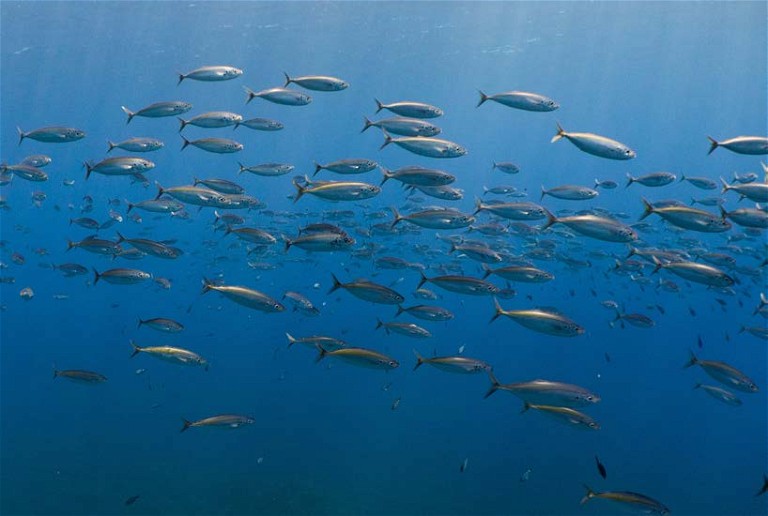
“ Long bottom times and throaty grunts can pique the fish’s curiosity, but nothing beats a bait fish struggling. ”
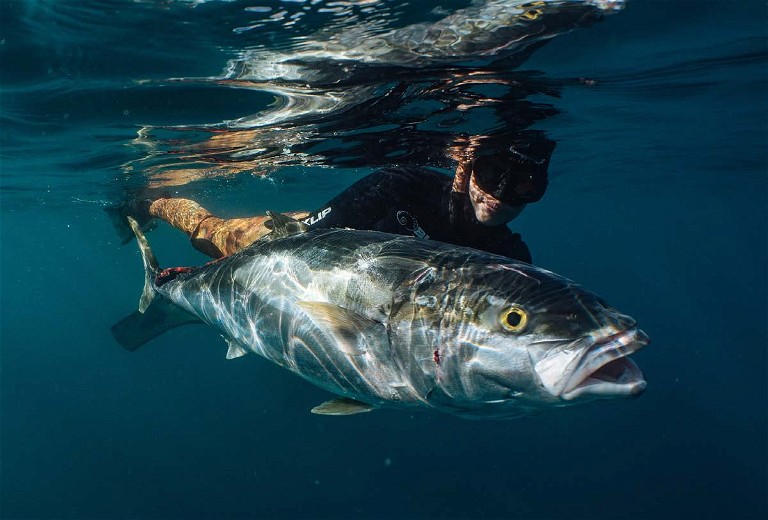
A short but super fat fish of just over 20kg was the first customer to come onboard.
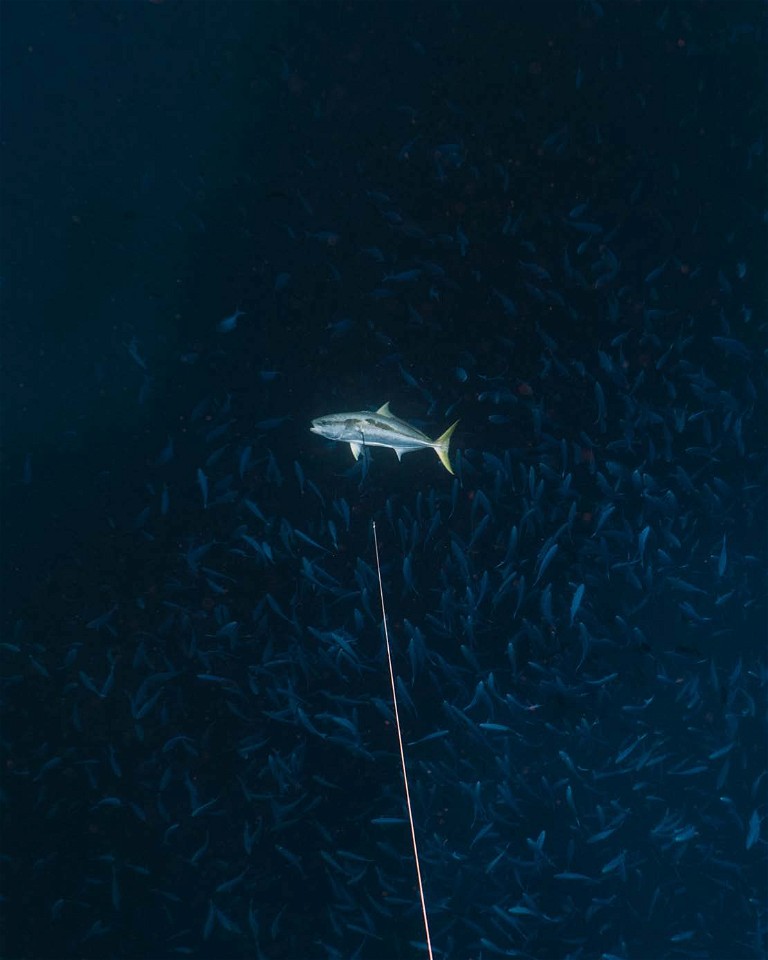


“ We tucked in behind Little Barrier and fired up the COBB Grill for a lunch of crumbed kingfish burgers.... ”

When you dry age kingfish, the sashimi gets better everyday.
I’m looking forward to the next winter dive session and encourage anyone who thinks the kingfish disappear in the colder season to go try their spots – you never know when you will be rewarded!
For anyone looking to get out to some of the more remote fishing spots, we run charters out of Tairua and in the Hauraki Gulf, and specialise in spearfishing trips for small groups of divers.